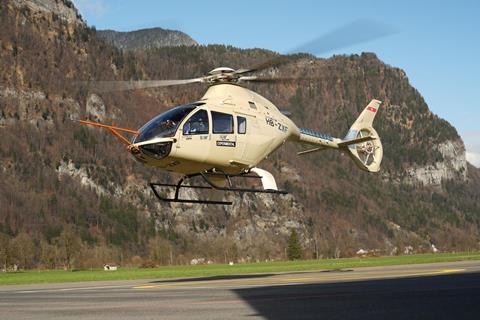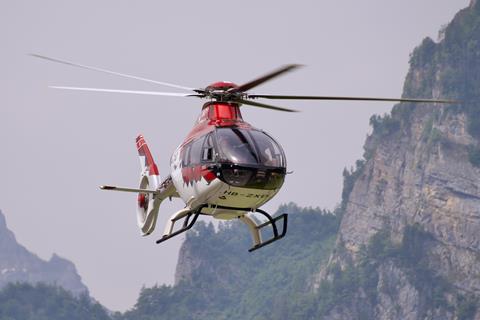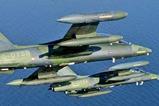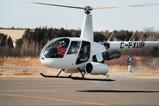Leonardo Helicopters is increasingly confident that certification for the AW09 will arrive in time to allow service entry for the light-single in 2025, following the maiden sortie of the first production-representative aircraft.
Taking place on 24 February at the airframer’s flight-test centre in Mollis, Switzerland, the flight of pre-serial aircraft PS5 should provide a significant boost to the long-running development programme.

“We now have two workhorses that are able to carry out the flight-test campaign, therefore for the rest of the year we will start the certification flight campaign in direct collaboration with the authorities,” said programme chief Guglielmo Monguzzi at the Heli-Expo show on 28 February.
Although the company is “not currently speculating on the date of type certification”, he says it expects entry into service in 2025.
As well as being the first production-representative aircraft, PS5 is also the first to be assembled at the helicopter’s future assembly site in Vergiate, Italy; previous examples have been built in Mollis.
Changes between PS4 – the current test asset – and PS5 include an updated main rotor design and the implementation of a weight-reduction programme to boost the AW09’s useful load, says Monguzzi.
Modifications to the transmission entailed changing the design from a twin- to a single-mast configuration “which is optimised for our external flight controls” which is a “simplified architecture”.
As a result, the component count was cut, weight reduced and maintainability improved, he says. The rotor system will later be retrofitted on PS4.
“We are committed to deliver to the market the right product with the right performance,” adds Monguzzi.
Originally launched in 2009 as the Marenco Swisshelicopter SKYe SH09, the programme was acquired by Leonardo in 2020 and has since seen multiple changes, most notably last year’s powerplant switch, with the Honeywell HTS900 dropped in favour of the Safran Arriel 2K.
In fact, there have been so many alterations over the course of the programme that little of the original design remains.
Crucially, however, the aircraft’s key strength is still in place, says Alberto Verna, head of product marketing at the airframer.
“I think the most valuable thing that has not changed is the cabin itself. It is unique in its class with the rear access, such big volume, and flexibility in layout,” he says.

Leonardo Helicopters will also later this year produce the first serial aircraft, known as S6, further bolstering the flight-test fleet.
In the meantime, the manufacturer is readying its Vergiate final assembly line to accommodate the AW09.
Production of PS5 at the site has helped to “reduce the learning curve”, says Monguzzi, enabling Leonardo Helicopters to “sustain the production volumes required to match market demand”.
However, he declines to specify future output levels or how quickly production will be ramped up.
Leonardo Helicopters holds provisional sales contracts for over 100 AW09s and added to that total at Heli-Expo through agreements with Sloane Helicopters and Metro Aviation for nine and 30 aircraft, respectively.
The manufacturer intends to perform customer demonstration flights with aircraft S6 “as soon as practicable”, says Monguzzi. Boasting a maximum take-off weight of 2.85t, the AW09 can accommodate a single pilot and up to eight passengers.


















































